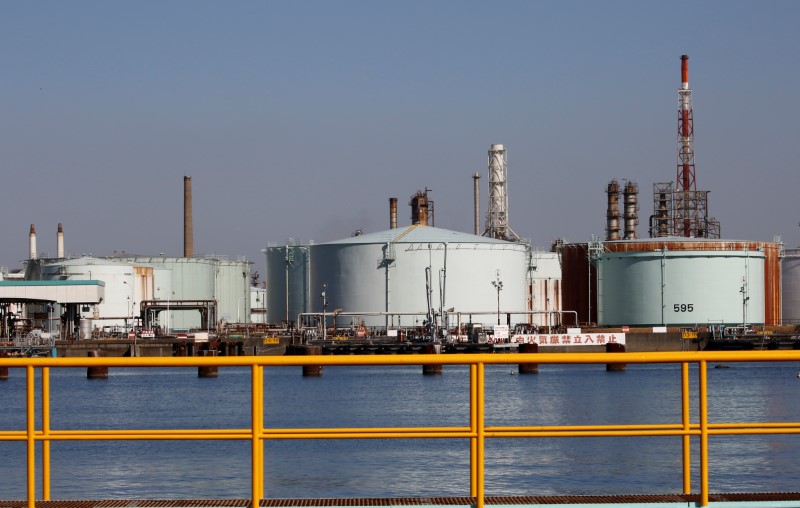(Bloomberg) -- OPEC+ agreed to a one-month extension of its record oil-production cuts and adopted a stricter approach to ensuring members don’t pump more than they pledged.
The deal will underpin the oil market’s recovery, easing the financial pain felt by resource-dependent emerging economies, shale explorers in Texas, and blue-chip companies such as Royal Dutch Shell (LON:RDSa) Plc.
Brent crude prices could rise to as much as $50 a barrel from Friday’s closing price of $42.30, according to consultant Wood Mackenzie Ltd.
It’s a victory for Saudi Arabia and Russia, who put a destructive price war behind them to cajole Iraq, Nigeria and other laggards to fulfill their promises to cut production. The two leaders of OPEC+ showed that they intend to keep a close watch on the oil market. The group’s monitoring committee will now meet every month to assess the balance between supply and demand amid an uncertain economic recovery from the global pandemic.
“Our collective efforts have borne fruit, and despite many uncertainties, there are encouraging signs that we are over the worst,” said Saudi Energy Minister Prince Abdulaziz bin Salman. “Demand is returning as big oil-consuming economies emerge from pandemic lockdown.”
After a video conference lasting several hours on Saturday, delegates said all nations had signed off on a new deal for a production cut of 9.6 million barrels a day next month. That’s 100,000 barrels a day lower than the reduction in June because Mexico will end its supply constraints, but a tighter limit than the 7.7 million barrels a day set for July in the group’s previous agreement.
In addition, any member that doesn’t implement all its production cuts in May and June will make extra reductions from July to September to compensate, according to an OPEC communique.
Those promises are a particular vindication for the Saudi minister, who has consistently pushed fellow members to stop cheating on their quotas since his appointment last year.
But they could also add an element of risk. In theory, the entirety of the 23-nation production agreement, which runs until April 2022, is now contingent on every member making 100% of their pledged cuts, according to the communique. That’s something rarely achieved in the 3-1/2 years that OPEC+ has existed, or indeed the decades-long history of the Organization of Petroleum Exporting Countries itself.
Oil has just posted a sixth weekly gain in London, more than doubling since April with traders anticipating tighter supplies as demand recovers from lockdowns. U.S. President Donald Trump on Friday hailed the cuts from OPEC and its allies for saving America’s energy industry. U.S. Energy Secretary Dan Brouillette also welcomed the deal on Saturday.
The oil market “is still in a fragile state and needs support,” Russia’s Energy Minister Alexander Novak said in opening remarks at the virtual meeting. “That is why today more than ever it is important to adhere to 100% compliance.”
The group hopes to build on its success by pushing the market into a supply deficit next month, taking advantage of a price structure called backwardation to chip away at the billion barrels of oil stockpiles that built up during the pandemic.
Read more: OPEC+ Tries Novel Strategy to Turn Oil Price Curve Upside Down
There was no discussion at the meeting about the future of the additional 1.2 million barrels a day of voluntary cuts being implemented by Saudi Arabia and its Gulf allies in June, delegates said.
The cartel will meet again in the second half of June for another review of the oil market. Talks are scheduled on June 18 for the Joint (NASDAQ:JYNT) Ministerial Monitoring Committee, which could recommend a further extension if it’s deemed necessary, pushing the production curbs into August, a delegate said. That panel will meet every month until December.
The next full ministerial OPEC+ meeting has been scheduled for Nov. 30 to Dec. 1, delegates said, although the communique notes that a conference could be held whenever it is required.
Cutting production is always painful for oil-dependent states. Iraq in particular needs every penny because it’s still rebuilding its economy following decades of war, sanctions and Islamist insurgency.
The country made less than half of its assigned cutbacks last month, so compensating fully would require it to slash production by a further 24% to about 3.28 million barrels a day, according to Bloomberg calculations. Accepting such terms could risk a backlash from Iraqi parliamentarians and political parties loath to bow to foreign pressure.
Read: Oil’s Fragile Peace Is Threatened by Iraq’s Desperate Reality
The traditional shirkers in OPEC+ have promised many times before to do better. Some analysts are skeptical it will be any different this time.
“Everyone saves face with this agreement,” Jan Stuart, global energy economist at Cornerstone Macro LLC, said on Friday after a tentative deal was in place. “But it begs the question: What is the enforcement mechanism? I’m very curious to see how the organization is going to elicit greater compliance from the cheaters.”
There’s also a risk that future OPEC+ curbs could be undermined by a return of Libyan oil. The civil war there halted more than 1 million barrels a day of production, helping OPEC+ rebalance the market. But a cease-fire now opens the door for a gradual recovery of supply.
For now at least, members of OPEC+ can enjoy the price gains resulting from their deal.
“The oil market is on its way to recovery,” said Ann-Louise Hittle, oil analyst at Wood Mackenzie. “Supply has shifted dramatically already. Global demand is recovering too, with both May and June climbing from the low seen in April as the coronavirus-related shutdowns continue to ease.”
(Adds oil-price forecast in third paragraph.)
©2020 Bloomberg L.P.
